
Aorus GeForce GTX 1080 Ti 11GB Review
Manufacturer: AorusUK price (as reviewed): £759.98 (inc VAT)
US price (as reviewed): TBC
Aorus, for those that don't know, is Gigabyte's brand for premium and flagship products spanning graphics cards, motherboards, and peripherals. This product, then, is one of the highest end GTX 1080 Ti SKUs the company offers (the Xtreme Edition of this card being the absolute top dog). It doesn't have a crazy or overly long name like many such cards, but the design itself is far from subtle. Requiring three expansion slots and spanning 293mm long and 142mm tall, the Aorus GTX 1080 Ti is a real monster. Via advanced custom cooling and a solid overclock, Aorus is clearly looking to impress, as well it should given that it's also asking you for £760 in exchange for the card.
We're personally not massive fans of the design here, finding it a little too garish and in-your-face, but this isn't something we'll knock points off for, as it's entirely subjective. The main thing to be aware of is just how much space you'll need to accommodate it – it certainly isn't going to be your best bet for an SLI setup, though this is of course supported.
Where Aorus gains points is in build quality. Unlike most of its rivals, metal is used for most of the cooler shroud, although the cross covering the middle of the front fascia is hewn from plastic. You can flex and move the shroud a little if you try, but overall it's solid thanks in large part to the thick metal backplate affixed to the PCB – an absolute necessity when you're strapping a cooler this big to a card.
The default base clock of this card is 1,569MHz with a rated boost clock of 1,683MHz. However, like many third-party Nvidia offerings, a free but slight performance boost is available out of the box by selecting OC Mode in an appropriate overclocking utility like Aorus Engine. This ups both speeds by 25MHz, and this is also the mode we've tested in. There's also a Silent Mode available, which drops the base and boost clocks to 1,480MHz and 1,594MHz respectively (reference speeds) while also altering the fan curve to favour lower noise. Going by the OC Mode base clock, the Aorus GTX 1080 Ti is clocked nearly 8 percent higher than a Founders Edition card. That said, there is no memory overclock – Aorus has it running here at the default 11Gbps.
Supporting the factory overclock (and hopefully some healthy manual overclocking) is an upgrade to the power inputs, with Aorus opting for dual 8-pin inputs instead of the default 8-pin/6-pin combination. The inputs themselves are indented relative to the top edge of the PCB, so you shouldn't have issues with protruding power cables, although the extra height of the cooler will still need to be considered. LEDs are used to indicate whether the PCI-E voltage is stable or not.
While Nvidia now appears to be done with DVI in its high-end parts, Aorus certainly isn't. To the standard trio of DisplayPort headers and single HDMI port the company has added one dual-link DVI-D connection and two more HDMI ports – one at the rear I/O panel like normal and one internal port on the card's right edge, which you can connect to front-facing HDMI ports such as that found on the NZXT S340 Elite. You can still only connect four displays/devices at once (this is a GPU limit), but there's clearly substantially more flexibility. Aorus calls the feature VR Link, and it exclusively allows you to connect a VR device and two HDMI monitors at once with no need to ever swap cables, which is conceivably very appealing to a certain subset of people. Connecting to the DVI-D port will disable one of the rear HDMI ports and the internal one.
RGB LEDs are a given on high-end graphics cards now, and this is no exception. The cross on the shroud and the top Aorus logo light up via RGB Fusion, meaning they can synchronise with suitable Gigabyte and Aorus motherboards.
Aorus has gone all out on its cooling solution, and the resultant heatsink is an absolute beast. The downside is that it occupies three expansion slots as a result, but many motherboards are designed to accommodate such cards so you won't lose much by way of PCI-E connectivity, though small form factor fans will need to watch out. A massive copper baseplate draws heat away from the GPU (via thermal paste) and VRAM chips (via thermal padding), and Aorus is also using a copper section on the backplate to help dissipate heat from the rear of the GPU too. Additional thermal pads are used for all VRM components, with even more used on the rear of them. Aorus's composite heat pipes and angular fins are used, both with claimed benefits for cooling potential and, by implication, noise.
Such a large heatsink requires some serious airflow to be adequately cooled, and Aorus's answer is to install a trio of 100mm fans. The interesting part is that the outer two physically overlap the middle one, which allows the length to remain sub-300mm. The arrangement is called WindForce Stack, and the fans have unique blade designs and double ball bearings. The middle fan also spins in the opposite direction to the other two, a decision Aorus says reduces turbulence while increasing airflow. 3D Active Fan means the fans will all stop spinning once the GPU is below about 60°C or so.
The PCB is quite something to behold as well. There's a serious amount of power circuitry on account of the 12+2 phase power design, with Aorus also using Titan X-grade components here. The production process for this PCB is now fully automated as well, and to top it off it's been given what the company calls an aerospace-grade PCB coating for simultaneous protection against moisture, corrosion, and dust.
Aorus offers a standard three-year warranty with this card, although this can be extended to four years simply by registering the card on the appropriate website.
Specifications
- Graphics processor Nvidia GeForce GTX 1080 Ti, 1,594MHz (1,708MHz boost)
- Pipeline 3,584 stream processors, 224 texture units, 88 ROPs
- Memory 11GB GDDR5X, 11Gbps effective
- Bandwidth 484GB/sec, 352-bit interface
- Compatibility DirectX 12, Vulcan, OpenGL 4.5
- Outputs/Inputs 3 x DisplayPort 1.4, Dual Link DVI-D, 2 x HDMI 2.0b, 1 x internal HDMI 2.0b
- Power connections 2 x 8-pin PCI-E, top-mounted
- Size 293mm long, 142mm tall, triple-slot
- Warranty Three years (four years with registration)

MSI MPG Velox 100R Chassis Review
October 14 2021 | 15:04

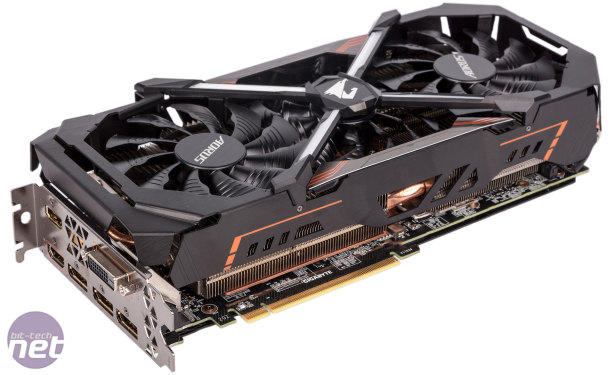
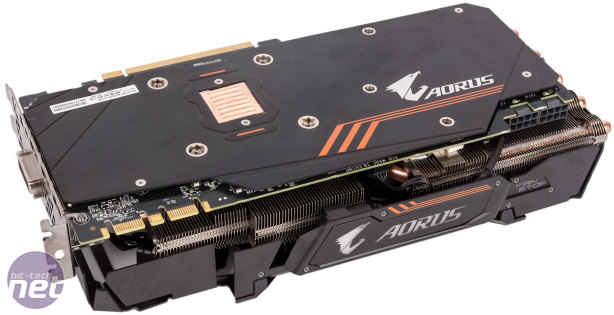
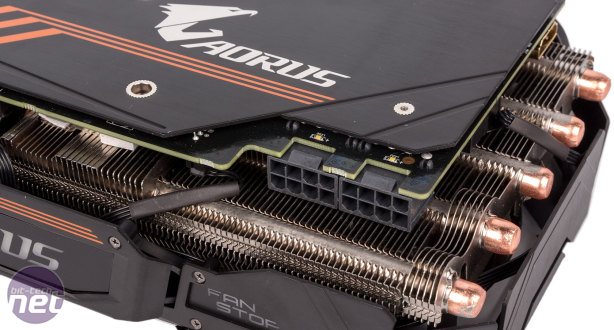
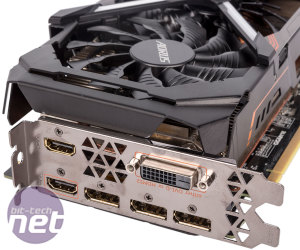
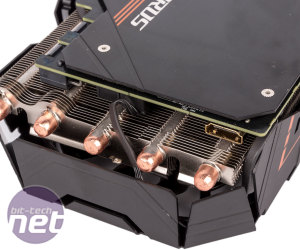

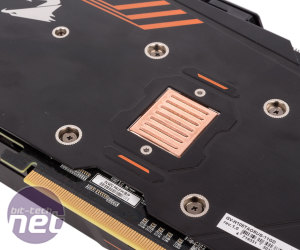
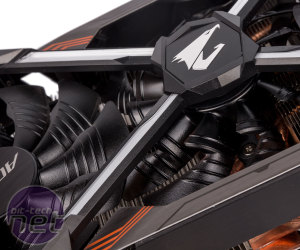
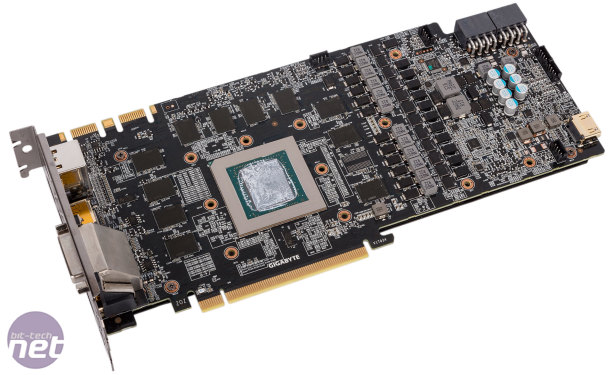
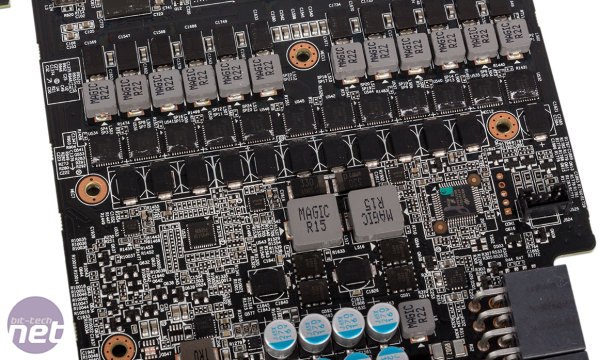
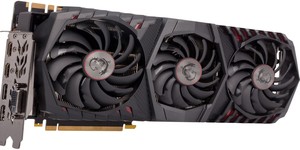
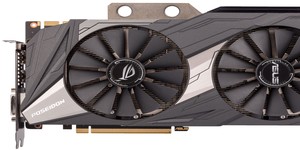
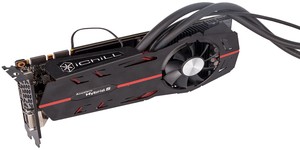




Want to comment? Please log in.